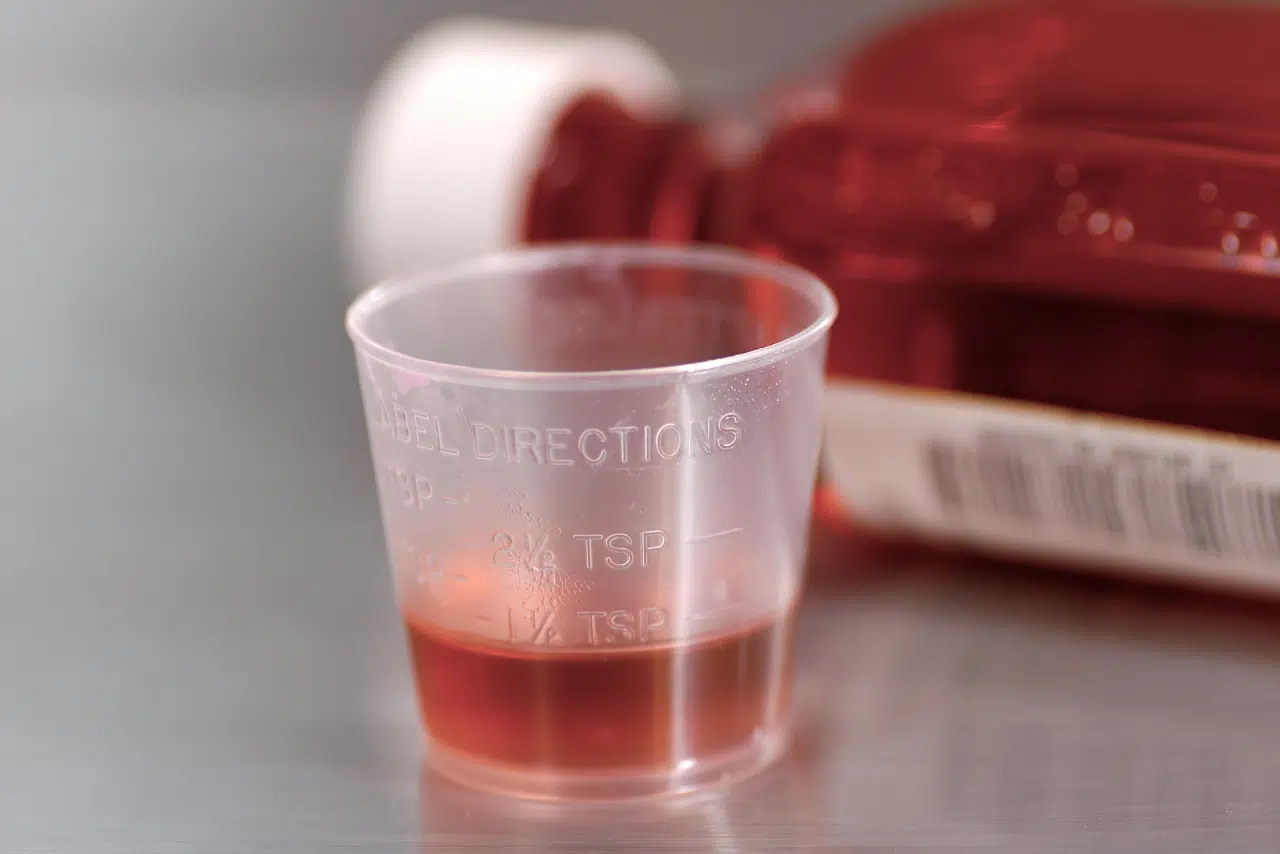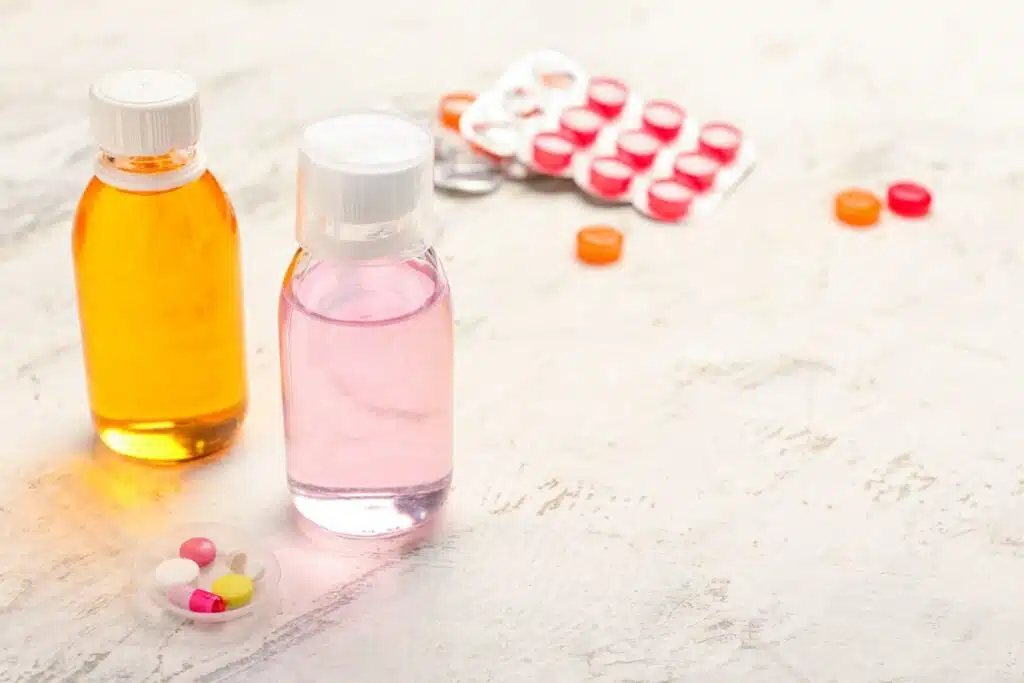
Robotripping: A Guide For Parents
Robotripping is the dangerous misuse of cough medicines containing dextromethorphan (DXM) to achieve a psychedelic-like high. Many teens turn to over-the-counter medications often found in home medicine cabinets, without realizing the serious psychological and physical side effects.
Ingesting high doses of DXM can lead to hallucinations, dissociation, nausea, and even life-threatening risks. Understanding the dangers of robotripping is crucial for parents looking to protect their teens from substance abuse. Keep reading to learn more about this growing concern and how to help your teenager get the support they need.
Is your teen struggling with mental health or substance abuse challenges? We’re here to help. Call us at Beachside today or visit our admissions page to learn more about our personalized programs and start your teen’s journey toward healing.
What Is Robotripping?
The term “robotripping” refers to teens abusing products that contain dextromethorphan (DXM). This misuse can be correlated with visual and auditory hallucinations as well as a sense of euphoria. DXM is also considered to be an opioid substance.
DXM + Robotripping (What You Need to Know)
DXM has largely replaced codeine and alcohol as ingredients in cough syrups in order to minimize abuse. When used as directed, DXM has very few side effects compared to codeine and alcohol. In addition, DXM usually causes vomiting a person drinks a large amount of cough syrup—an additional safeguard against misuse.
However, DXM is know available in different forms, such as powders, capsules, and pills. Not only that, but some teens research how to extract the DXM from cough syrups. Therefore, unlike in syrups, extracted DXM or DXM in pill/powder form is unlikely to induce vomiting, thus eliminating the safeguard against abuse.
Because DXM replaced codeine and alcohol, many of the types of misuse and slang terms are the same. Teens might mix DXM cough syrup with soda or alcohol and they might even add hard candies to dissolve in the mixture. In addition, some teens snort DXM in powder form.
Some additional slang terms for robotripping include the following:
- Robo
- Rojo
- CCC
- Dex
- DXM
- Poor Man’s PCP
- Triple C
- Skittles
- Velvet
- Purple Drank
- Lean
- Sizzrup
- Orange Crush
- Red Devil
- Tussing
- Dexing
What Medications Contain DXM?
According to the 2021 National Survey on Drug Use and Health (NSDUH), “estimated numbers of people who misused cough and cold medicines in the past year were 173,000 adolescents aged 12 to 17.”
One of the main reasons why teens misuse DXM is that it is easily accessible in over-the-counter (OTC) cough and cold medicines. Oftentimes, these medicines are commonly found in the home, and many parents might not keep track of their use.
DXM can be found in common cough and cold medications that are sold over the counter, including the following:
- Robitussin
- Coricidin
- Vicks DayQuil Cough
- Zicam Cough
- Alka-Seltzer Plus Cold and Cough
- Children’s Dimetapp Cold and Cough
- Mucinex Cough for Kids
- PediaCare Children’s Fever Reducer
- Sudafed PE Cold/Cough
- Tussin DM
- Tylenol Cold and Flu Severe
These medications are easily accessible to most teenagers. In fact, there are over 120 medications containing DXM on the market. Most of these substances can be purchased over the counter—though some states may require buyers to be 18. These medications can come in the form of a liquid, lozenge, or an extended-release tablet.

What Exactly Happens During Robotripping?
In most instances, teenagers who robotrip experience hallucinations, sweating, feelings of euphoria, and dizziness. Those who are high on DXM have also been described as ‘zombie-like.’ The exact effects of robotripping depend on the amount of medication an individual has consumed.
DXM intoxication can be viewed in different stages, also known as DXM plateaus. These stages are as follows:
- First plateau (100-200mg): Teens may feel much more energetic and become more engaging. These effects can be compared to ecstasy.
- Second plateau (200-400 mg): Commonly compared to being drunk, this stage involves a decrease in motor skills and overall cognitive function. Additionally, euphoria and hallucinations are typical during the second plateau.
- Third plateau (400-600 mg): Individuals may experience dissociation. This involves increased hallucinations, very poor motor control, and feeling overall disconnected from reality. Users have noted that the effects of this stage are similar to that of ketamine.
- Fourth plateau (500mg<): The most intense stage, teens may experience delirium, lessened pain perception, feeling like they are in a trance, and hallucinations. This stage can lead to aggressive outbursts in some cases and has been compared to taking PCP.
Because DXM overdose can cause dangerous disorientation and aggression, recognizing early warning signs of teen addiction is critical. Learn more about the harsh truths and warning signs of addiction in teens to protect your child before it escalates.
Robotripping + DXM: Myths vs. Facts
There are several myths surrounding robotripping and DXM. It’s important to dispel these myths so that parents, teachers, coaches, and loved ones can identify—and prevent—substance abuse in teens.
- Myth: Medicines with DXM are only available by prescription.
- Fact: Many medicines with DXM are available over-the-counter without a prescription. Furthermore, DXM is not regulated under the Controlled Substances Act (CSA).
- Myth: OTC drugs are always safe.
- Fact: Many OTC drugs can be dangerous when misused. In other words, when used as directed, most OTC drugs are safe. However, excessive use of any OTC medication, like DXM, can lead to severe consequences.
- Myth: There are no warning signs of DXM abuse.
- Fact: There are several warning signs of DXM abuse, including finding empty cough and cold syrup bottles in a teen’s room or backpack, missing cough and cold drugs from a medicine cabinet, purchasing cough and cold medicines when not sick, and changes in sleep, mood, or overall behavior.
What Amount of DXM Is Considered Safe?
Of course, these medications can be safe when used responsibly. The correct dosages for the different forms of medications containing DXM are as follows for individuals over 12:
- Liquid (Syrup): 120 milligrams every 24 hours.
- Lozenges: 180 milligrams every 24 hours.
- Extended Release Oral Suspension: 120 milligrams every 24 hours.
What Are the Risks and Side Effects of Robotripping?
Robotripping can be dangerous and lead to several short- and long-term side effects. Short-term side effects can usually be overcome and can be indicators that a teen is abusing DXM. However, there are long-term consequences when a teen abuses DXM in large quantities or when they abuse DXM for several months or years without any interventions.
Short-Term Dangers of Robotripping
The short-term dangers of robotripping include the following:
- Over-excitability
- Hyper and energetic
- Loss of coordination
- Profuse sweating
- Hot flashes
- Dizziness
- Nausea and vomiting
- Elevated blood pressure
- Slurred speech
- Lethargy or drowsiness
- Racing heartbeat
- Hallucinations
- Paranoia
- Panic attack
- Seizure
- Rapid eye movement
- Impaired judgement
- Overdose
50% of DXM Toxicity-Related ER Visits Occur in Patients Age 12-20
Some of these dangers can lead to an ER visit. According to StatPearls, DXM abuse leads to about 6000 ER visits each year in the US. Furthermore, “Fifty percent of all emergency department visits due to dextromethorphan toxicity occur in patients between the ages of 12 and 20.”
Long-Term Consequences of Robotripping
Many of the above-mentioned short-term dangers will go away as DXM leaves the person’s system. For example, effects like a racing heartbeat or dizziness only last as long as the drug is still in the person’s body. But, over time, these effects can damage a person’s body and mind.
In addition, short-term dangers, such as impaired judgement, hallucinations, and paranoia, can lead to reckless behaviors with lasting consequences. For instance, a teen with impaired judgement might engage in reckless behaviors—like driving under the influence—that can lead to legal issues, injury, or death.
The following are examples of the long-term consequences of robotripping:
- Addiction or physical dependence
- Anxiety
- Depression
- Mania
- Psychosis
- Hypertension
- Kidney failure
- Bodily injury (from accidents while under the influence)
- Legal consequences (arrests, criminal record, etc.)
Lastly, teens who mix DXM with other drugs or alcohol are at a greater risk of long-term consequences.
How Are Teenagers Getting DXM?
Accessing cough medicines containing DXM is sadly easy. Products like Robitussin and Coricidin are frequently purchased and misused without notice. Furthermore, the U.S. Drug Enforcement Administration (DEA) has noted that the widespread abuse of DXM is not only due to its ready availability but also to abundant online resources detailing how to abuse it.
Additionally, it has been highlighted that DXM misuse is accompanied by an evolving set of street names, such as CCC, robo, poor man’s PCP, and ‘skittles’—with ‘skittling’ becoming another name for robotripping.
Social media plays a clear role in helping teens stay up to date with new slang and methods for acquiring and abusing cough medicines, as the language surrounding it is in constant flux. In fact, popular websites and apps often feature forums that allow teens to share tips and experiences related to the misuse of DXM products.
Teen addiction red flags are often subtle at first. Recognizing the early behavioral changes that indicate substance abuse can help parents take action sooner. Learn more about the top red flags of teen addiction to better support your child.

Is Your Teen Abusing DXM? (Warning Signs and Symptoms)
It is important to be familiar with the signs and symptoms of robotripping so that you can identify them in your loved one and get them the help they deserve.
Common indicators that your teenager may be misusing medications containing DXM include:
- Slurred speech
- Poor motor control
- Dizziness
- Stealing money or medications
- Hallucinations
- Secretive behaviors
- Change in friend groups
- Finding cough medication in their rooms
- Decline in schoolwork
- Increased mood swings
- Overall sneaky behavior
- Loss of interest in favorite activities
- Difficulties at home
- Sudden apathy
- Inability to maintain relationships
Additionally, parents should keep an eye out to see if they are running out of cough medicine at an unusual rate.
Preventing Robotripping (What You Can Do)
Preventing a teenager from robotripping and other forms of medication abuse involves proactive strategies. Oftentimes, parents assume “my kid knows better” and, therefore, they don’t take proactive steps at reducing the risk of OTC drug abuse in their homes. However, it is best to implement preventative measures as a precaution anyway.
The following are preventive measures for parents to keep their kids safe from robotripping:
- Lock up any medicines that could be abused, such as OTC medicines containing DXM, prescription painkillers, and prescription stimulant drugs for ADHD like Adderall
- Keep a count and inventory on all medications with the risk of abuse (parents can mark bottles or OTC blister packs each time they are dispensed)
- Be clear with children and teens about the medications they are taking, including the importance of following a doctor’s instructions for prescriptions and label directions for OTC drugs
- Talk to kids about drug misuse and why some drugs can be dangerous due to side effects (it’s a common myth that talking about drug misuse will “put ideas into a teen’s head”—but it’s best to have ongoing conversations about risky behaviors instead of “one big talk”)
- Properly dispose of expired or unused medications (local community resources and other organizations like the FDA provide information on medication disposal)
- Ask friends or family members to safely store their medications as well—especially when children or teens spend significant amounts of time in their homes
- Be consistent and follow the same rules (teens and children also learn by role-modeling, and if parents abuse medications, they will think it is okay for them to do so as well)
How to Help a Teenager Who’s Robotripping
If your child is struggling with substance abuse, such as robotripping, professional help is the most effective way to get them on the road to recovery.
While in treatment for substance use disorder (SUD), they can identify and address the underlying factors that have led them to seek a state of intoxication. They can also learn ways to cope with stress and triggers in a healthy, constructive way. They may participate in individual therapy, peer support settings, and family counseling.
Furthermore, experiential therapies and holistic healing strategies can help them learn how to find peace and fulfillment without using drugs.
There are several treatment programs that can allow your teenager to maintain school and social obligations while getting help. These include outpatient programs, therapeutic boarding schools, or inpatient programs that integrate coursework into treatment.
Additionally, it’s important to remember that open communication and empathetic listening are key to building a strong foundation for helping your teen navigate substance misuse. The road to recovery is challenging, but early intervention and support make a significant difference in your teen’s ability to heal.
If you’re unsure where to start, explore resources on how to support a teen in addiction recovery for guidance.

Find Professional Treatment Today
We understand that you want your child to have the best quality of life possible, and at Beachside Teen, we are dedicated to providing the support, structure, and care they need to thrive. Our comprehensive therapeutic programs are specifically designed to address the unique challenges that teenagers face, from substance use issues to mental health disorders such as anxiety, depression, and trauma-related struggles.
With a compassionate, experienced team of mental health professionals, we take a personalized approach to ensure each teen receives the right level of care in a safe, supportive environment. Our evidence-based and holistic therapies promote emotional growth, resilience, and long-term healing, empowering teens to develop healthy coping skills and positive habits for life.
Together, we can help your teen reach their fullest potential. To learn more about how Beachside Teen can make a difference or to begin the admissions process, give us a call or visit our Admissions Page today.




